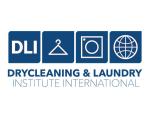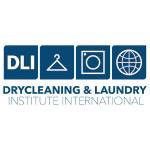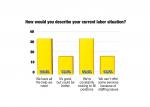LEHI, Utah — When recognition programs fail, they don’t just waste resources — they can actively damage employee morale.
This was one of the key points made by Stephen Jolley, marketing leader at the employee engagement and recognition platform Motivosity, during his recent webinar “The Journey of Employee Recognition: From ‘Nice Job’ to Business Game-Changer,” hosted by the Society for Human Resource Management (SHRM).
In Part 1 of this series, we examined the history of employee recognition programs, ranging from the Industrial Revolution to the modern day, along with the impact ignoring such programs can bring to both businesses and employees.
Today, we’ll continue by probing some of the common hazards companies should avoid when it comes to this facet of business.
Good Intentions, Bad Results?
Jolley shared two examples of pitfalls that drycleaning operators and other business owners and operators should note.
He points to the experience of one of Motivosity’s clients, an 850-employee restaurant chain, when it attempted a system where managers would give merit vouchers, worth $1 to $3 each.
“Despite good intentions, the process was super manual and became inconsistent over time,” Jolley says. “The back-of-house staff felt like they were rarely recognized compared to their front-of-house counterparts.”
The program’s ultimate downfall came from common issues: manual tracking, long delays in rewards, and inconsistent manager participation.
“Ultimately, it was undermining the recognition program they were seeking to promote,” Jolley says.
Another case involved a 740-employee relocation company’s paper-based sticker system.
“When they launched the program, it was hard to manage, especially when it came to mailing and collecting stickers internationally,” Jolley says. “Many employees just felt like it was silly or cumbersome.”
These examples mirror challenges faced by drycleaning operations, particularly those with multiple locations. Traditional recognition approaches often fall short in several critical areas:
- Limited Visibility — “Many employees feel excluded,” Jolley says. “They feel unseen when recognition is limited to just a few. It leads to disengagement and creates a sense of disconnection within their teams. When recognition is not inclusive, it undermines the sense of community and belonging that we want to strive for in the workplace.”
- Administrative Burden — Systems can often require substantial manual tracking and administration. For drycleaning managers already juggling multiple responsibilities, this extra workload could often lead to inconsistent implementation.
- Delayed Recognition — “Rewards were delayed,” Jolley says of the restaurant program. “Employees filled out redemption forms, then gave them to their manager and the manager mailed them to the main office.” This lag time diminishes the impact of recognition.
- Cost Inefficiency — Gift cards, a common reward choice, often come with hefty fees and tracking challenges. As Jolley points out, “Don’t waste budget on stuff employees don’t actually care about.”
Evolving Workforces, Consistent Needs
The changing workforce landscape compounds these challenges.
“By 2025, about 22% of the workforce will work remotely,” Jolley says. While drycleaning operations require on-site staff, they compete for talent with industries offering more flexible arrangements, making effective recognition even more crucial.
The statistics are sobering, Jolley says:
- Employees who receive recognition only a few times yearly are three times more likely to be disengaged.
- They’re 39% more likely to seek new employment within a year.
- They’re 24% more likely to be struggling in their roles.
“When recognition is a high priority, employees experience a greater sense of well-being,” Jolley says. “They’re less likely to face anxiety and stress in the workplace.”
Jolley feels that the message is clear: Outdated recognition programs aren’t just ineffective — they’re counterproductive. The key lies in understanding these common pitfalls to build more effective, modern approaches that truly resonate with today’s workforce.
Come back Tuesday, when we’ll complete this series by examining six keys to creating and running a modern employee recognition program. For Part 1, click HERE.
Have a question or comment? E-mail our editor Dave Davis at [email protected].








































































